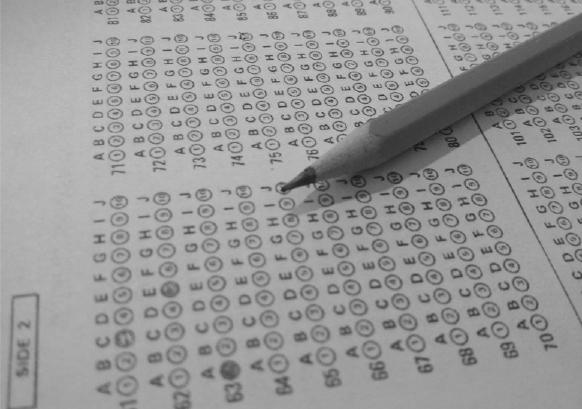
48 minute read
Why you should start investing now
from Newspaper: Fall 2021
by The Voyager
By LAURA SILENZIO ‘23 Opinion Editor
Standardized tests are not for everyone. Well, actually they’re for everyone, but you know what I mean. The pandemic has practically upended the college entrance exam industry, making a number of colleges shift to the test-optional policy. This year, a staggering 75 percent of four-year colleges and universities will not require SAT or ACT scores for the 2021-22 admissions cycle. Before, many colleges and universities were forced to suspend the requirement for these tests due to limited testing ability in 2020 because of Covid-19, but many of these schools have now decided to extend this policy, with some of them possibly making the switch permanent schoolwide. Top educational institutions in the country, like the Ivy League Universities, adopted temporary test-optional policies, and the vast majority have still kept them for this upcoming cycle. Most of the time, higher education institutions like the Ivies are a case of follow-the-leader, so when all of the universities in the Ivy League announced they wouldn’t require test scores within the same month of each other, it wasn’t a surprise. This same pattern also occurred with nationally ranked liberal arts schools like Williams College and Amherst College. The test-optional policy made it so that these schools’ applications were frenzied with students taking their shot at schools they never thought they’d get accepted to. Schools like Columbia’s applications were up by as much as 51% in the past year. It also created a record low acceptance rate for many institutions, especially the Ivies, making it seem more intimidating for students to apply in the upcoming years. For many students across the country, these standardized tests were a way for them to stand out amongst other students and receive scholarship awards. Now, however, the once critical tests that teens around the country once bit down their nail beds for are no longer seen as the #1 priority in the application process. On the other hand, so many students can easily say they’re relieved. A large percentage of applicants don’t have the resources to take these standardized tests multiple times to achieve the most impressive scores. Most admission offices did agree that test-optional policies would make their institutions more open to lower income and underrepresented students. This looks like good news, sure, but it worries many college officials about student success since it’s harder to predict student success outcomes without being able to evaluate their standardized test scores. Going test-optional may be an easy way to claim equal opportunities for all student admissions, but unfortunately socioeconomic status influences all elements of college admissions, not just test-scores. For example, a Stanford study found that admissions officers respond more favorably to essays by students from wealthier households. The numbers tell the story as data shows that Georgetown only admitted 7.34% of early applicants that didn’t have test scores. So, their appearances don’t exactly translate into meaningful change in the admissions process making “optional” feel more like “preferred.” If colleges were truly committed to being as unbiased as possible in the admissions process, they would want to adopt a “test-blind” policy and not look at test scores at all. After all this information you’re probably thinking: what now? Well, what I’ll advise you to do is to prepare for and take said standardized tests, just like how you would if it were actually required for all colleges. You never know; if you go into the test with no expectations, you could surprise yourself. Not only that, but now colleges have indicated there is a much heavier reliance on high school transcripts and grade-point average, meaning it’s more important than ever to get your GPA as high as possible. Your high school performance will show your work ethic. It’s also important you do as many clubs that you are interested in, so the school can see your passions and how much you’re willing to commit to it. You also don’t want to spread yourself out too thin; if you’re thinking of adding multiple things to your plate, think of how this may affect your other commitments. Remember, it’s mostly about quality not quantity. With all that being said, say you do poorly on the SAT or ACT and sending in your scores would most likely be worse than not, you are able to opt out of sending your test scores to specific colleges. Though, it is very important to evaluate the places you’re applying to vs. your scores, and if your extra-
Advertisement
curriculars and GPA can compensate for the scores you’re not sending. Plus, colleges are still encouraging students to submit their scores, especially if they already have them, making it clear that they do value these scores in some sort of capacity. This begs the question, “How much is this policy really helping us as students?” There’s the obvious conclusion that you wouldn’t feel obligated to take the SATs, but it’s difficult to truly know how your choice affects the way they decide for your application. When you look back after being rejected, you’d have to wonder if sending your test scores could’ve gotten you accepted. At least, that would be my overthinking brain, but to each their own.
Students open their SAT test booklet to find an overwhelming layout of answer bubbles found in the depths of their worst nightmares.
Photo courtesy of Pixabay.com
Investments for Dummies 101: think ‘diversified’
By TIANA CYRELSON ‘22 Media Editor
For new investors, the stock market can be scary. It can be challenging to know which stocks to invest in, which to drop, and when to do all of it. Mr. Sherman teaches a full-year investment course for students interested in learning and covering taxes to day trading. As Eastern’s only Investments teacher, Mr. Sherman was asked which stocks he is investing in currently, and which ones he would recommend. While Mr. Sherman may be the Investments teacher, these stock suggestions are for informational purposes only. One of the first lessons in Sherman’s class is that each investor should do their own research and analysis before making any decisions. That being said, here is Sherman’s list of 5 recommended stocks. “This is a tough question to answer,” Sherman says, “because I have many different investment accounts, each with a different purpose. Some are for retirement, others are for fun, and I even have an investment account that I manage for my daughter, who is one year old.” Sherman recommends a diversified profile, complete with retirement savings: mutual funds, index funds, and ETFs. Along with “fun” stocks: blue chip, growth, income, penny stocks, and crypto. First on the list is Twitter. Sherman describes it as a “relatively safe investment with steady growth potential over two years.” The stock keeps his portfolio moving in the right direction but doesn’t have particularly huge returns. “I don’t see myself holding onto this stock for many more years.” Next up is Sherwin-Williams, described as his “Workhorse.” Sherman was lucky enough to get into Sherwin-Williams early, about 13 years ago. The value was less than $20 a share and has had continual growth since then, recently surpassing $700/share. In addition, it completed a 3-for-1 stock split earlier this year. “This yielded me three times my number of shares,” he said, “and the stock has continued to grow, currently sitting just shy of $300.” The third is Athira Pharma, a clinicalstage therapeutics company developing therapies for neurological diseases like Alzheimer’s. Sherman calls it a “risky investment with ten times large growth potential.” He doesn’t expect to see a profit from this until January 2023, when data from clinical trials come back. “This investment is not for the faint of heart, as they are a very young company with volatile price swings. However, the payoff would be worth it if it pans out.” The fourth company comes with a disclaimer from Sherman. “Let me start by saying you should never invest more than you are willing to lose in any single investment, especially one as EXTREMELY RISKY as Dogecoin.” Dogecoin, different from Bitcoin, is riskier but will achieve more of a profit than the other crypto coins. In addition, there is unlimited DOGE, so the “HODL” or “Hold On for Dear Life” aspect is less of a factor. In other words, the idea of “ignore the volatility and hold” is not applicable. Sherman says he doesn’t have a lot in DOGE, but he’ll “jump back in when it dips and
Mr. Sherman, Eastern’s investments teacher, recommends a “diversified” portfolio of stocks for personal investment. Photo by Tiana Cyrelson ‘22, Canva.com out again when it bounces back.” The fifth and final stock Sherman would recommend is Zoom. Although it has not been as successful since October 2020, Sherman believes that there is a potential need for more virtual learning with school starting back up. He also believes more companies will purchase subscriptions to Zoom for their employees who are now working remotely. “I’m betting the stock bounces back over the next 12 months and settles in around $350-400/share.” With each of these recommendations, Sherman recommends caution and personal research, but he encourages students to begin learning about investments, which stands as a jumping-off point.
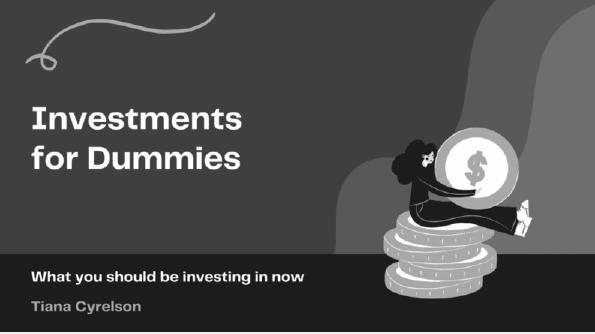
By TIMUR MARKOWITZ ‘24 Staff Reporter
Lockers have been a major part of high school for as long as anyone can remember. They are in almost every teen show or movie, regardless of when or where they take place. However, at Eastern Regional High School, a majority of students have elected not to use their lockers due to how much of an inconvenience they are. The Voyager staff conducted a poll of 103 Eastern students on whether lockers are necessary. Only 11.7 percent of students choose to use their lockers on a daily basis, despite 53.4 percent of students knowing where their lockers are located. Some students don’t even know their locker numbers or locker codes due to the low frequency at which they are used. In fact, only 35 percent of students know their locker combinations and 62.1 percent of students have never even opened their lockers. With more activities moving online, the concept of taking notes in a notebook or having a folder used for more than one occasional paper a week is alien to many students. As a result, folders, binders, and notebooks have been rendered partially useless. Most work is on the iPad, making lockers less of a necessity because students aren’t carrying around multiple binders and textbooks. The minimal paper work assigned to students doesn’t take up much room, and fi ts in a backpack. Now, it seems as though lockers have no real use apart from wasting space in small hallways. Only 23.5 percent of students think lockers are necessary, while
With more activi- 74 percent say they would prefer if ties moving online, space taken up by the concept of taking lockers was used alternatively. notes in a notebook or Backpacks enable people to bring having a folder used their supplies from for more than one oc- class to class without using their casional paper a week lockers, and the is alien to many commodities that lockers offer don’t students. outweigh the inconveniences they possess. While the ECCRSD Pupil Right of Privacy Agreement guarantees that students have lockers and desks for storage, this rule was created in 2003, far before the use of iPads became commonplace for students in school. Lockers are less necessary than they once were as educational institutions become less dependent on paper. These numbers show the ways in which students no longer require lockers at school, due to the inconvenience of being late outweighing the positives of having a storage space for supplies.

The classic “Thanksgiving Dinner” needs a revamp from the un-friendly traditions. Photo by Sabrina Ripke - Pixabay Freshman Basirah Corbett-Collier unlocks a locker in the 200 Hallway.

Photo by Andrew Shinkle ‘22 Alternative Thanksgiving Options
By ANNA LANGAN ‘22 Staff Reporter
Thanksgiving. “Turkey Day.” A traditional American holiday. When Thanksgiving comes to mind, it can be assured that most people think of the classics. A table complete with a roast turkey, stuffi ng, pies, cranberry sauces, macaroni and cheese, mashed potatoes, and an abundance of warm, fi lling side dishes comes to mind almost immediately at the mention of the fall holiday. However, as time goes on, this traditional meal is becoming less common. As more people venture out of traditional diets for their religions, health necessities, or personal beliefs, the classic “Thanksgiving Dinner” is in much need of a revamp. As a vegetarian of three years, I can defi nitely say that this Thanksgiving upgrade is much needed. The most important Thanksgiving element has always been the turkey throughout American tradition. But Turkey is simply not viable to people who have gone vegan, vegetarian, or are observing certain religious specifi cities. It’s also an extremely expensive meat as time progresses and demand and infl ation increase. In fact, according to Rhode Island News Station WPRI, “On average 46 million turkeys are killed for the Thanksgiving holiday each year. This number results in Americans spending over $604 million on this traditional din-
nertime main dish.” That is millions of lives and millions of dollars just for one “traditional” meal. For many people, this is simply not worth it. Luckily, recent technological advances have left people with a fan-favorite meat substitute: Tofurkey. This is a meat substitute made out of wheat and tofu. Tofurkey is often served with a stuffi ng made of grain, and it’s sold in pre-made loaves, most of which are complete with the stuffi ng. All that’s left is for you to bake it, and then you’re complete with the perfect Thanksgiving feast. This is a viable alternative for anyone; it reduces the amount of time and stress spent on perfecting a turkey, as well as being very environmentally friendly. Thanksgiving isn’t the only holiday that can benefi t from a revamp; vegetarian and vegan meat substitutes exist for almost every meat you could dream of: sausage, steak, chicken, burgers, nuggets, and infi nite sandwich varieties have sprouted up incredibly fast as years go on. While I’m not suggesting that you completely convert to being vegan or vegetarian, swapping out meat for vegetarian options is incredibly benefi cial for not only your body, but the world around you. And not just that, but they taste incredible too. So, don’t be afraid to take that leap and reach for a new meal, whether that be anything from Tofurkey to vegan chicken nuggets. You never know what you’re missing out on! Why are Schools having a hard time transporting Kids?
By RYLEE PEARLMAN ‘25 Staff Reporter
During the pandemic, our lives all got put on hold. Everything we considered normal was shut down and not accessible to the public. Kids were no longer allowed at school, and adults were unable to go into work. Technology took a larger role as everything went virtual. Kids were attending school in their living rooms on a laptop, and their parents were at work upstairs. Soon enough this became the new normal and life had completely changed. With school virtual, bus drivers were no longer needed. But now that school is back in-person, there’s a higher demand for them, and they’re not coming back. Many were scared to catch the virus in a very enclosed space. Others were concerned about the mask mandate. When bussing to an elementary school, how will you make sure that the young grades keep their masks on? Some drivers also quit simply because they would rather stay home than drive a bunch of rowdy children. In the beginning of this school year, Philadelphia had such a limited number of drivers that a bus company stopped picking up kids. Parents had to transport their kids to school. Another school district in Philly is offering to pay parents $300.00 a month to take their children to and from school. Parents who only take their kids to school and have them use township provided busses in the afternoon will get $150.00 a month for their contributions. Across the nation, nearly 80 percent of different school districts have reported that they don’t have enough bus drivers. A school in Philadelphia even reported that they are now starting to ask the government for help. Many schools reported that on the second day of their school year, a good percent of the students were either late and got tardied or just did not show up at all. During my fi rst few months at Eastern, I’ve had a few different friends come into school late and tell me that their bus forgot to get them this morning or that it just didn’t come at all. Even my little brother who started his fi rst year at Voorhees Middle School, was “forgotten” on his fi rst day. The bus didn’t come to his bus stop, so he ended up being late on his fi rst day. My experience with transportation at Eastern has been different. My bus comes at roughly 6:45 a.m every morning, and, if I’m being honest, I have only taken the bus two times this year. The fi rst time I took the bus on the fi rst day of school I was so nervous. I walked onto the bus with my backpack and my soccer bag and as soon as I stepped into the aisle, I couldn’t fi nd any available seats. Not only was I internally freaking out, but the bus driver started to drive while I was still standing up trying to fi nd an open seat, making me even more stressed out. Finally, I plopped down in the fi rst seat I could fi nd which already had another boy sitting there. Now, I look back and regret not asking if I could simply share a seat with the guy, but I was already freaked out enough and couldn’t risk the idea of him saying no. Recently, I have been refl ecting on the things that we had before COVID. The simple has now become complicated, and I think that we all take things for granted. Although the shortage of drivers is affecting the way we get to and from school, it is understandable why some of the drivers don’t feel comfortable. In the end, all we can do is hope that the solution will get resolved and kids will be able to get to school on time, and be able to sit comfortably on their busses.
’ve been making fi lms forever; since I was a little boy,” says Eastern Graduate Kris Roselli, director of his feature fi lm debut: Hideout. During the fi nal stretch of his senior year, Roselli was always at work, from confi guring lighting for the school musical or writing scripts in Mr. Kemery’s Creative Writing class, his passion for fi lmmaking grew exponentially. “Way back when, I would play with my action fi gures, and do a lot of drawings, so I was always being creative,” says Roselli. “I remember having a thought when I was little, around 11 or 12, that I’m going to do this for the rest of my life.” This passion was cultivated in the halls of Eastern, where he was pushed by teachers to further his innovative writing. “It’s a diffi cult thing to step out of the box when you’re writing,” Roselli describes, “but it’s really important.” Roselli graduated in 2005, trading the halls of EHS for those of Full Sail University, where he graduated in 2009 with a Bachelor’s in Film Production. Thus, the long and diffi cult journey of an aspiring fi lm director began. He continued to write, now with seven completed feature fi lm scripts on his shelf. Despite his passion, the road was not always smooth. “It’s mostly all setback,” Roselli warns. “It’s important for aspiring fi lmmakers and actors to know that it is not all fun and games.” The payoffs for the aspiring are few and far between, and Roselli acknowledges the discouraging nature of the fi eld. “But I think the people that want to do this, It’s just something that you need to do. I’d rather struggle and be able to create my art.” Roselli continued to write and direct, hoping one day to hit success. Along the way, he realized the importance of failure. While discouraging, it is necessary. It is better to have an imperfect fi rst draft than nothing at all. “The fi rst draft is always rough, but that’s okay. Just write the fi rst draft, and then get onto the second draft. You want to get all your ideas on the page fi rst.” Four years ago, after only two drafts, Roselli fi nished the script for a horror fi lm he titled “Hideout.” With this script, Roselli found success. He attributes this to the script’s potential, and, most importantly, the story. “This script would be entertaining on a smaller budget or a multimillion dollar budget,” he says. “You could have A-list celebrities or people you’ve never seen before, and that’s why I believe this script is special. If the story is there, it’ll be good.” The fi lm soon started production, and Roselli took on the challenge of casting his fi rst feature. Using the internet, he held open auditions for actors all over the country. “If I want to talk to an actor again, it’s either something I was looking for with the character or something they bring to the table that I wasn’t expecting.” After reviewing an actor’s video, he would place them in a Zoom call with other actors, watching them bounce lines off one another. The movie takes place in a house where all of the characters are trapped together. Because of this, it was important to Roselli that the actors were able to not only work together but play off of each other as well. “The most important part is seeing if they can take direction and if they have a good personality. I’d much rather take someone that’s a good actor that’s excited about being on the project, the movie, than someone who’s a great actor who isn’t very pleasant to be around.” The fi lm came out on November 9th and found the success he hoped for. It was nominated for seven awards at the First Glance Film Festival, including Best Horror, Best Director, and Best Narrative. Chris Wolfe, Kate Lyons, and Bryan Enright were nominated for Best Actor, Best
“I
Actress, and Breakout Performance, respectively. At the same festival, the fi lm won both Best Ensemble Cast and audience choice for Best Feature Overall. Roselli’s years of effort have paid off with this fi lm, and he believes this is because of his balance between perseverance and patience. “You have to have an equal amount of perseverance and patience. If you have too much or too little of either one, you’re just going to fall apart,” he said. Now, the fi lm can be found worldwide on Amazon Prime and eleven other easily accessible platforms. Despite the struggle, Roselli is proud of his tenacity and wants to extend this lesson to the students at his alma mater: “If you believe in what you’re doing in your heart, then don’t give up on your dreams or yourself, even when you feel like everyone is against you. I’ve been following my dreams for over 20 years and I will tell you that they do come true if you work really hard at them. You have to believe that nothing is truly impossible and be determined to overcome any obstacles to achieve your goals.”
Hideout can be found worldwide on Amazon Prime and eleven other easily accessible platforms. Photo supplied by Kris Roselli Eastern alumni Kris Roselli laughs on set of fi lming his feature fi lm debut, “Hideout.” Photo supplied by Kris Roselli
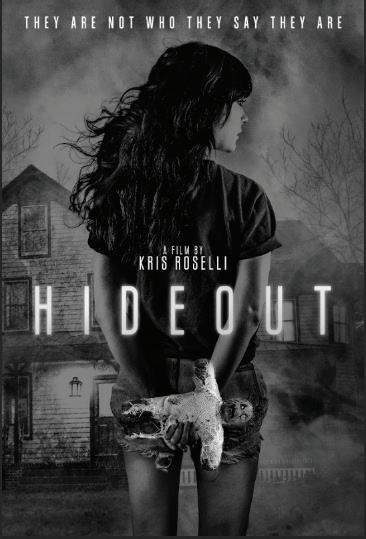

By SHREYA KOMAR ‘22 Staff Reporter
Yup, you know it! It’s back-toschool season, and the world couldn’t be a more exciting place. With enticing posters of backto-school supplies, notebooks, clothes, and even fi tness routines, it’s easy to get overwhelmed. It’s often a misconception that one has to reinvent themselves for a new school year and make monumental changes in the way they look or behave, but it’s the small changes that go a long way. One of the aspects of our health that we often neglect is mental health. Keeping good mental health is important, not only to keep our minds healthy and calm, but also to prevent burnout as the school year drags on. So, here are six mental health hacks to help you get through this school year.
1. Build Meaningful Relationships
Building meaningful relationships is one of the most important ways that you can keep good mental health. As humans, we like to be part of a community. Without family or friends, we lack the essential support systems and people who will be there for us when we need them. So, in short, meet new people, have insightful discussions, and make sure to connect with your family because those are the moments that have the capacity to fade the anxiety that comes with school work, and allow you to appreciate the greater community you’re a part of.
2. Prioritize Self Care
This one should be self-evident: prioritize yourself, and your happiness. Make time to read a book, meditate, take a walk, observe your surroundings, sleep, or binge a good show with your siblings. Think about how any decisions or changes that you are planning on making will affect you and your well-being. Self-care looks different for everybody. Do what works for you.
3. Limit Your Social Media!
I think everyone knew this was coming. Social media has proven to waste lots of precious time. It’s surprising how much time you gain simply by limiting your screen time. This is especially helpful for those of you who are procrastinators (no more staying up past midnight to do your homework). So, instead of scrolling through Instagram, take some time and focus on yourself. Do activities that will help you clear your mind, such as meditating and exercising. Most importantly, get an extra hour or two of sleep.
4. Set Attainable Goals
Stop being so hard on yourself. Set goals that you know you’ll be able to achieve. Preparing for college can seem daunting, but it doesn’t mean you should be overextending yourself. This doesn’t mean limit yourself; it just means you should know when to take a step back and focus on your existing workload. Sometimes, setting too many diffi cult goals can take a toll on your mental health. Sacrifi cing your mental health is just not worth it in the long run. Try your best. Your best is enough.
5. Comparing (almost) Never Helps
From the dawn of time, humans have compared themselves to others. Unless you’re looking at others and learning from them, comparing yourself to your peers can be toxic and deteriorate your self-worth and mental health signifi cantly. Everyone is on their own path. Comparing yourself to others just doesn’t make sense because you are your own person. Everyone has a different story, which you may or may not know. Everyone has had their ups and downs. Comparing yourself to your peers can skew your perception of reality.
6. Do What You Can Do. Do What You Like.
High school activities and clubs can get overwhelming. Overcommitting to too many clubs can be draining and counterproductive. Do the things that bring you joy — not the activities that you think look impressive. At the end of the day, you should be proud of the hours you’re devoting to your hobbies and activities. Make sure that whatever you choose to do is within your capability Otherwise, devoting yourself to too many extracurriculars may lead to burnout and stress.
High school is an emotional roller coaster for everyone. The best way to take care of ourselves is to focus on the things we can control. Remember to enjoy the four-year journey because, at the end of the day, we are in high school to learn inside and outside of the classroom. Make sure that you are constantly refl ecting on the insights you’ve gained and are open to the lessons high school has yet to teach you.
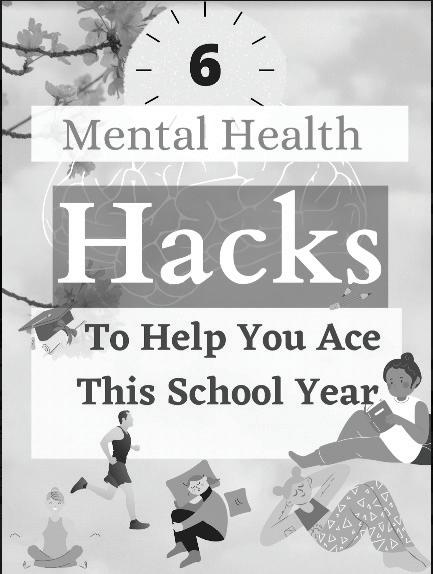
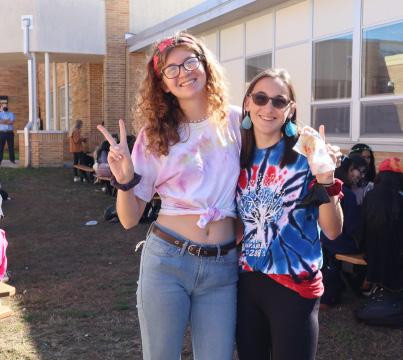
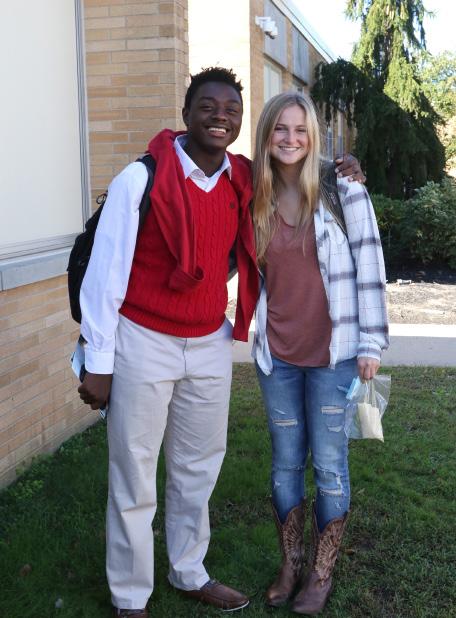

Hippie Day
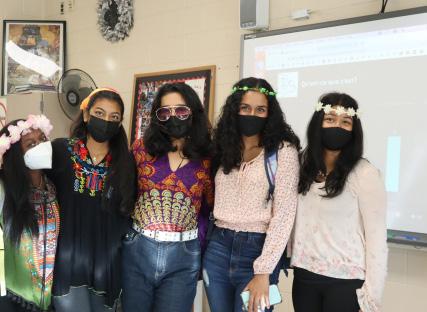


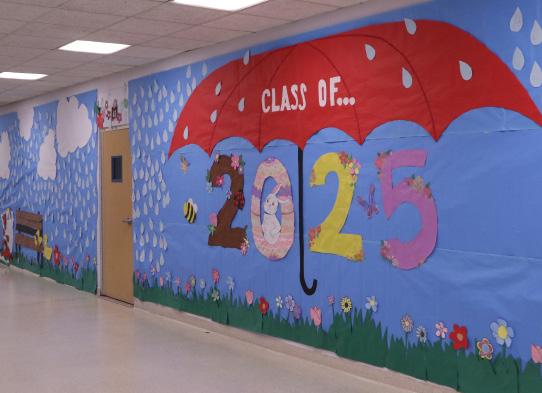
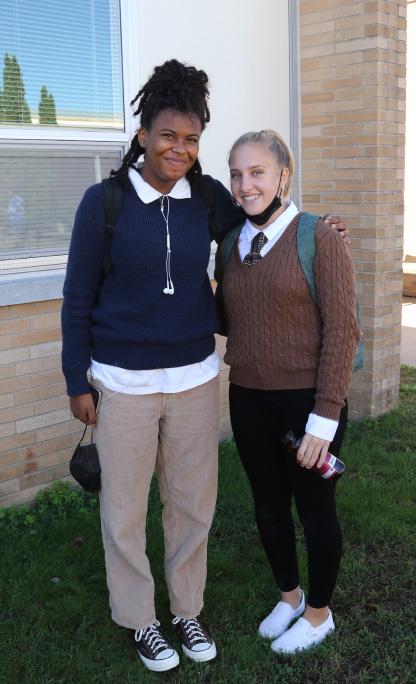

Spirit Week 2021 Winners: Class of 2023 Country/Country Club Day
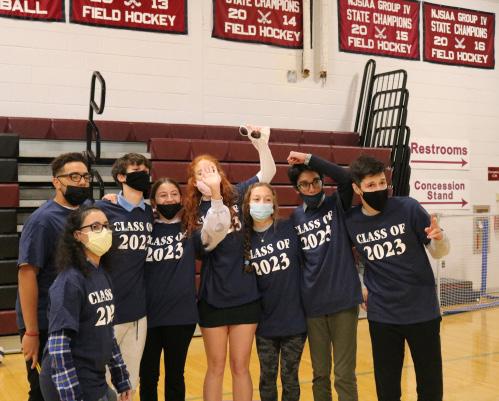


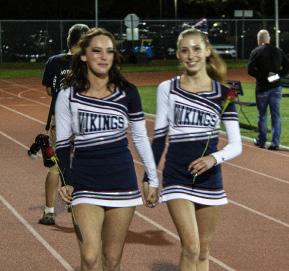
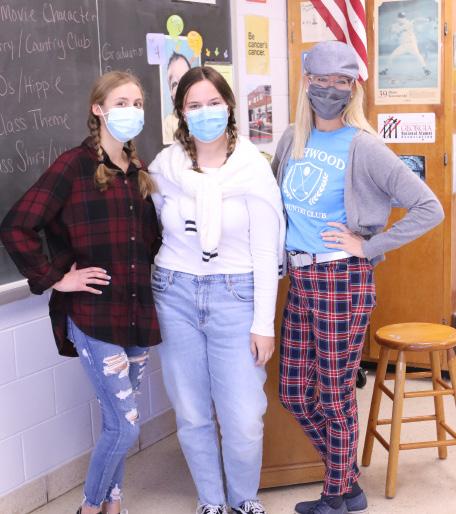
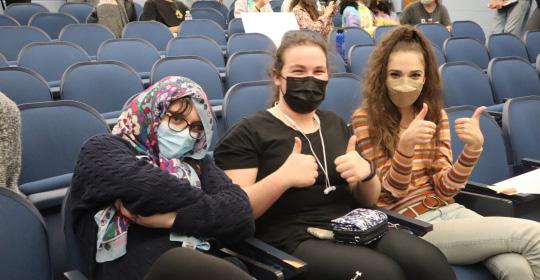
Academic Challenge
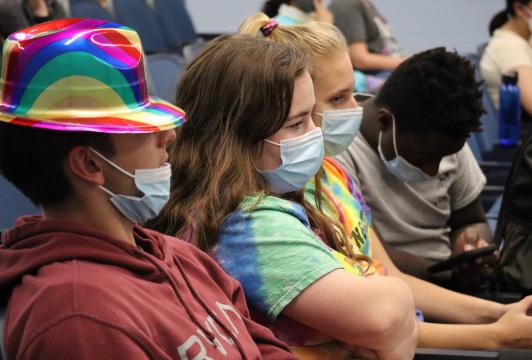


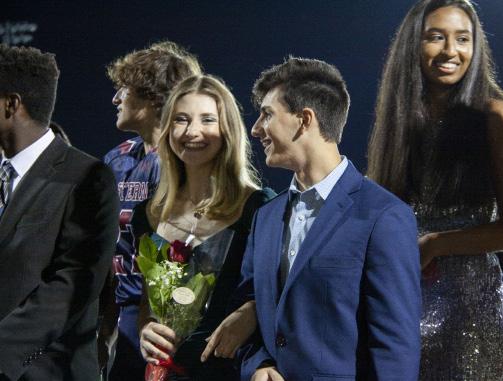

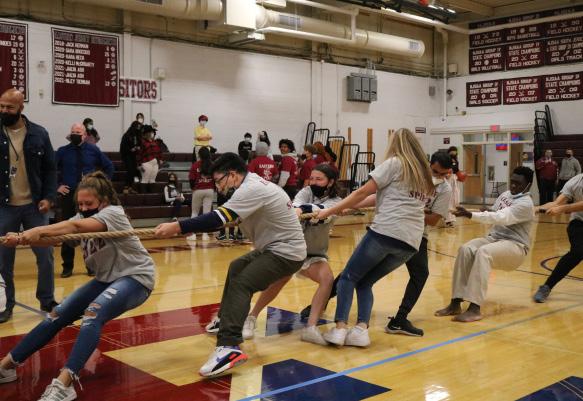
Field Day Events



Homecoming Game Victory
Homecoming Court


Fall 2021
Lunch and Learn returns to fanfare from students, but improvements should be made
Coming into this new school year, most of us expected some big changes from last year’s Zoom extravaganza. We’re now set free from our cage-like bedrooms, and it’s good to be back—in some ways more than others. One of the biggest reasons students wanted to be back in-person was to be able to talk to their friends again, but the split-lunch formerly implemented by the administration made it diffi cult to get a full sense of freedom. The entire point of the split-lunch was to slow the spread of COVID-19 throughout the school, but the rules were contradictory and not benefi cial to anyone. Barely anybody prefers the split-lunch over Lunch-andLearn, and it’s not hard to understand why. Under the split-lunch rules, students were forced to sit on one side of the lunch table, and confi ned to the same space for the entire period. Students couldn’t even leave to go to the bathroom. Sitting on one side of the table doesn’t make much sense, because people are still in close contact anyway. It doesn’t keep them from turning and talking, which defeats the whole purpose. The one-location rule does more harm than good, since walking around in the hallways helps to alleviate the massivelycrowded cafeterias and gyms. The split-lunch schedule also made it increasingly diffi cult to see teachers during school time. Lunch-and-Learn is a valuable asset for us, as we have almost an hour for eating, studying, extra help, labs, club meetings, and catching up on homework. Without this luxury, many students struggled juggling all of their academics and extracurriculars, since many clubs and activities were forced to take place after school. The administration attempted to solve this overbearing problem with the after-school Zoom Offi ce Hours; however, students pointed out that they couldn’t even make it home on time in order to participate, since it runs from 2:10 to 2:40. This left many students in disarray, as they could only really sneak in a question or two with their teachers in passing, with not enough time to address more in-depth questions. Thankfully, Lunch and Learn was brought back in late October. We haven’t gone back to exactly the same rules as the pre-2020 Lunch and Learn, but beggars can’t be choosers. For starters, the lunch time has almost doubled, which gives us considerably more time to actually sit and be with our friends. Also, students are free to see their teachers for meetings and extrahelp during either Lunch A or Lunch B. Overall, Lunch-andLearn has been an improvement over the split-lunch. Finally, the last main issue relates to the new rule about the period directly after lunch. If you’re late to that class, the teacher is supposed to shut the door and hand you a lunch detention. The problem is, now that there’s even more students in the hallways at once, hallways get easily cramped. And some people are terribly-slow walkers to begin with. Complicating matters further is our inability to leave the room we eat lunch in. For example, if students who eat in Gym 1 have a class in the 90 hallway, they may as well give up on trying to arrive on-time. Teachers should be lenient with lateness to class after lunch. If a student is ten minutes late, that’s a different story, but if they’re thirty seconds late, it shouldn’t be counted against them. Getting lunch detention for an insignifi cant amount of lateness is unfair, and serves as an obstacle towards learning. If the current Lunch-and-Learn let students freely roam the halls and provided them with ample time to travel between classes, some of its most detrimental aspects would be cleared up. The schedule now is much better than the splitlunch, but still far from perfect. At Eastern, we’re learning how to become adults in the world, and some necessary adjustments to our hour of freedom each day would facilitate this process.

Staff Editorial
Eastern Regional High School
1401 Laurel Oak Road
Voorhees, NJ 08043 856-784-4441
www.voyager-online.org
YouTube: ehs voyager
Twitter: @ehsvoyager Instagram: @ehsvoyager
Advisors:
Walter Bowne and George Kemery
Editorial Staff
Andrew Shinkle:
Editor-in-Chief
Leah Snyderman:
Co-Editor-in-Chief
Arianna Morales:
Associate Editor-in-Chief
Jenna Preston:
Associate Editor-in-Chief
Antonia Zong:
Managing Editor Laura Silenzio: Opinion Editor Madison Jolley: News Editor Cassidy Golin: Features Editor
Matt Chowansky:
Entertainment Editor Joseph Loverdi: Sports Editor Tiana Cyrelson: Media Editor Alana McLeod: Art Editor
Mahawa Bangoura:
Arts and Culture Editor
Staff Reporters
Dawn Betner, Basirah CorbettCollier, Maya Dunkelman, Kyle Goldstein, Jacob Gollin, Miraal Halim, Shreya Komar, Jordan Kramer, Aiden Kremer Olivia Marcantuono, Anna Langan, Lan Anh Nguyen, Rylee Pearlman, Molly Smith Michael Sorenson, Alanna Stein, Kaitlin Swift, Marcela Torres, Nick Vitale, Mark Wang, Timur Markowitz, Julia Zeidler
The Sophomore Slump
By KAITLIN SWIFT ‘24 Staff Reporter
Sophomore year: the bridging period between the bright and bushy-tailed freshman year, and the stress-fi lled junior year, where it feels like the weight of the world is on your shoulders. Sophomore year is the forgotten middle-child year when it comes to high school. Students are cynical, with a sense of immature sarcasm developed from the harsh realities of the world. High school isn’t the perfect movie-like experience they were expecting. The unexpected workload, diffi culties fi nding your crowd, and just being a tired, burnt out high schooler all contribute. So, how are this year’s sophomores doing? “I am very tired,’’ said sophomore class president Aden Falk. “It’s been diffi cult to start getting into the school year, but I feel as though we all needed this push back to reality,” sophomore Kejal Shah said. “Most of the time I feel motivated, but I do tend to procrastinate a lot,” sophomore Lorena Jimenez said. “I like the social part of sopho-
more year, but I am not feeling too great about the academic part,” sophomore Addison Kozuch said. “It is a lot harder than freshman year, but maybe that’s due to in person school,” sophomore Alanna Stein said. “On most days good grades motivate me,” sophomore Skylar Connor said. “I feel very motivated because I want to make sure I have the best future and want to keep my grades up,” soph“I feel very motivated omore Leilani because I want to make Johnson said. sure I have the best “This year is all future and want to keep about proving to my grades up.” myself that I am a good student, even though I don’t learn as fast as the other kids. I want to be known as Leilani Joy Johnson, not as a label.” Although the Class of 2024 may not be the most well rested, or the most fi lled with school spirit, it is clear that they are working to get back into the rhythm of a regular school year. Sophomore year is a struggle, trying to navigate through the sea of fellow sophomores, challenging classes, and working through the stress of high school. So, next time you see a sophomore, make sure to give them some recognition. Sophomores deserve to be recognized, in this crucial bridging period that will shape their high school career.
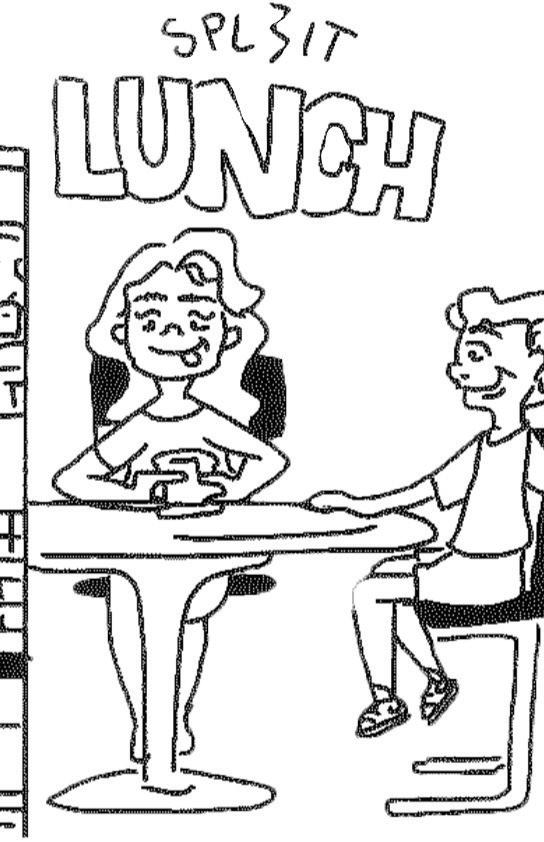
The COVID-19 pandemic has impacted my perspective on life in many ways. When the virus was originally spreading, I underestimated how life changing those fi rst few days off from school would be. As a sixteen-year-old trying to enjoy her sophomore year, I thought it would all go back to normal easily. But it wasn’t long before those close to me became seriously sick of it. I couldn’t ignore how serious it was any longer, and I tried my best to do everything that could protect myself and my family. I was going through a huge adjustment because of all of the changes that were taking place in my life. I started paying close attention to what was going on in the country and packing my brain with the alarming amount of terrible things I saw on the news. It was nearly impossible not to imagine the worst-case scenario. What if my grandparents were to get the virus? What about my parents? Can I even be near my friends and family? The stores were closed, school doors shut, nothing was open. Everything seemed like a nightmare that was impossible to wake up from. We tend to learn and grow the most when we’re forced to live and work in different ways. This pandemic has forced us to be pushed out of our comfort zone without any time to even think or process the changes that were being made so quickly in our lives. We are all trying to adapt to the devastation and disruption that this pandemic has brought to the world this year. It has brought a lot of bad but I can thankfully say that I’ve found some light in the dark situations. I’ve been refl ecting on what this year has meant for the world and for me personally, and there have been new perspectives on life I’ve developed that I didn’t have before. My self refl ection has made me question how factors such as social media, remote schooling, and lack of social life with others during those months of quarantine has changed my mental health and view of everyone and everything around me.
More than anything, it has changed the way I value friendships, myself, and others. It has made me realize that I’m not alone in this world and we’ve all been through something that nobody knows about. Although there were times that I thought social media was absolutely horrible and ruining my mental health during quarantine, I was able to fi nd some good. I’ve spent time reading stories about the lives of others during this time and I’ve realized that I’m not alone. We all are able to share our stories or struggles online and you might fi nd yourself feeling less alone. Yes, the internet can be a very negative and empty place, but I’ve tried my best to limit how much time I spend on it daily and the people I interact with. This year has made me realize I don’t want negative people in my life anymore. We have all already faced so much negativity, so there’s no reason to hold onto people that are only bringing you down in life. Surround yourself with people that appreciate you and want to support you, or even be that person for yourself. That’s what we all need this year. Despite the diffi culty, such changes have prompted new outlooks, new hobbies, and new ways of living. Families and communities have also slowed down and come to appreciate the pleasures of spending time together. Everyone has faced some type of challenge this year that has changed them. Whether it was minor or major, it’s still something that has changed the way you are.
Twitter sits on a home screen next to Facebook. Photo by LoboStudioHamburg on Pixabay
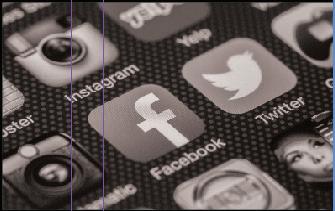
The 3rd Vaccine Dose and Booster Shot
By ALANNA STEIN ‘24 Staff Reporter
Refl ecting on a year ago today, it feels like a relief to be on the other side of the story. Last October, many of us were sitting in our bedrooms “attentively listening” to teachers’ lectures through an iPad screen. We were confi ned to our homes like a prisoner to their jail cell. Students throughout the region wondered alike when we would fi nally return to in-person school. At fi rst, the COVID-19 vaccine was a mere blip in our imagination, a “happily ever after” to our seven-month fantasy. Though at the time, the vaccine seemed like an unreachable goal to pursue; the following few months proved that theory wrong. On December 11th, 2020, the FDA (Food and Drug Administration) authorized the fi rstever COVID-19 vaccine. Some considered this an early holiday present! Before we plead for more, it is imperative to recognize how far we have come. Today, 57% of Americans are fully vaccinated. 404 million doses of Pfi zer, Moderna, and Johnson & Johnson have been administered to the public. Not only did the vaccine provide immunity against the Coronavirus, but it also provided a sense of normalcy. However, the Delta variant ceased our return to a completely normal and maskless life. The Delta variant is simply a more contagious form of COVID-19. It has the same symptoms and requires the same course of action. Luckily, recent studies concluded that the current vaccine ensures some protection against this variant. But the talk of multiple variants, including the Delta, has medical professionals questioning if a third dose or booster shot should be implemented. Similar to an annual fl u shot, the booster shot would provide an extra punch against the Coronavirus. The third dose would act similarly except for the fact that it would not be recurring. According to Medical News Today, the FDA has “authorized the distribution of the third dose and booster shots of both Pfi zer and Moderna COVID-19 vaccines.” So now the real question is, should you get it? Despite common conceptions, there is no difference between the third dose and the booster shot regarding the substance they inject into your arm. The main difference is who is eligible and when they are eligible. The third dose is targeted towards those with severe underlying health conditions, such as transplant patients or individuals who struggle with immune defi ciency. These specifi c patients struggle to produce antibodies from mRNA vaccines. The third dose helps the patient acquire the desired amount of antibodies which the initial doses are not capable of. The booster shot is recommended due to the concern that the average individuals’ immunity to certain viruses tends to wane over time. The booster shot, which is separate from one’s initial vaccine, further protects against new strains. The booster shot is similar to a white shoe: once the shoe gets dirty, it requires cleaning, but it will always remain somewhat white. The initial vaccine will always provide protection, but you need to “polish” your immunity with a booster shot every once in a while. All in all, you should 100% get the third dose or booster shot if and only if you meet the respective requirements. By getting vaccinated once, twice, or three times, you are not only protecting yourself, but you are also protecting others. We fi nally made it to the last chapter, the actual “happily ever after.” However, we must continue pushing through these uncertain times with optimism, intelligence, and selfl essness.
Editor’s Picks: What Should be Added to the English Curriculum?
Andrew Shinkle ‘22
The Road by Cormac McCarthy

Antonia Zong ‘22
Everything I Never Told You by Celeste Ng
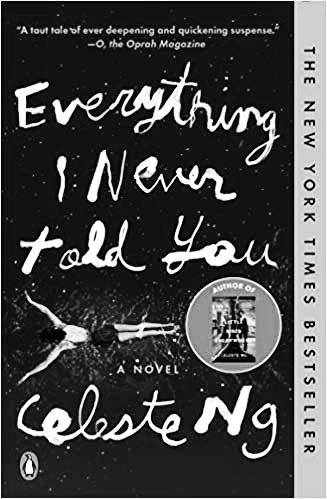
Tiana Cyrelson ‘22
The Perks of Being a Wallfl ower by Stephen Chbosky
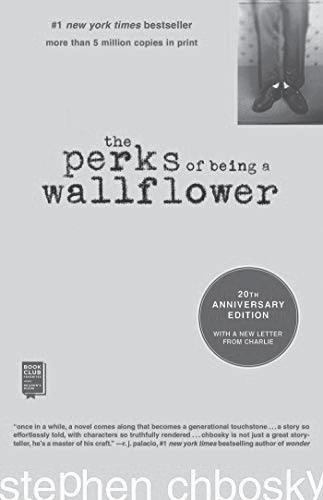

Leah Snyderman ‘22 Matt Chowansky ‘22
The Four Winds by Kristen Hannah

Stuck ‘till 7:15
By TIANA CYRELSON ‘22 Media Editor
Since coming back to school this year, the students have noticed a few major changes from pre-COVID times. By far, the most complained about has been the split lunch situation. Aside from that, however, students are unhappy with the new rules implemented at the beginning of the day. From getting off their bus at 7:00 until 7:15, students are forced to stay in either the 20 or 500 cafeterias. While this is only 15 minutes, it has been reported as a major inconvenience. Not only does this mean that students can not socialize in the morning, but they are also unable to visit their lockers or a teacher they need to see. With very little free time throughout the day, students would often use this time to run any errands necessary throughout the school, such as printing something in the Learning Center or returning a book in the Media Center. This change has not only proven to be an inconvenience but an unnecessary one as well. These 15 minutes do not help with COVID contact tracing and are therefore pointless. 15 minutes of unmonitored students wandering the hall is no more dangerous than 100 students sitting unmasked in the cafeteria, eating breakfast. The student body overwhelmingly dislikes this change and insists that things go back to how they were.
Zodiac Killer Revealed
By LAURA SILENZIO ‘23 Opinion Editor
A cold case specialist team, more than 40 former law enforcement investigators, journalists, and military intelligence officers say that they’ve now identified the true identity of one of the most prolific serial murderers in America: the infamous Zodiac Killer. The Zodiac case has been widely publicized since it took place in the 1960s. Everyone’s obsession with the twisted, gruesome events has turned it into an entire genre of entertainment like books, movies, and documentaries over the years. These famous complex cyphers and brutal slayings have been connected to five murders; claims of 37 murders by the killer himself have been confirmed, but the actual identity of the Zodiac has gone unsolved for over 50 years. However, things have changed. After years and years of digging, new forensic evidence and photos have been brought to light by Gary Francis Poste’s darkroom. Among this evidence are deciphering letters sent by the Zodiac that revealed him as the killer, but you wouldn’t be able to solve it without his full name, taking out the letters of his name to reveal the true message. After seeing the evidence and even just reading about signs of serial killers, many in his social circle began to believe that Gary could very well have been the killer. Their next door neighbors’ daughter, who wishes to remain nameless, said that as she’s grown up the signs became more and more obvious since when she was a kid; he used to babysit her and says that he used to teach her how to shoot guns all the time in their backyard.
By MIRAAL HALIM ‘25 Staff Reporter
For many, coming out is terrifying, especially when you have the whole world watching you. It was no different for Demi Lovato, JoJo Siwa, and many others celebrities in the public eye. More often than not, people don’t understand why coming out is so scary. There’s no way of knowing what others are going to say and there’s no way of knowing if you will be accepted or not. JoJo Siwa once said that it was easier to come out to the entire world than to her closest friends and family. That makes a lot of sense. In the long run, all you want is for your family to accept you, but you never know what you’re going to get. Siwa initially came out as queer. Being queer is a general classification for not being straight, but not knowing your exact sexual indentity. The singer later came out as pansexual. “Technically I would say that I am pansexual because that’s how I have always been. My whole life is just like, my human is my human,” Siwa stated in an interview. JoJo faced so much hate and lost many fans after coming out. On the contrary, she gained many new fans from the LGBTQ+ community. So many people who had been silently struggling finally felt heard. Siwa became a safe haven for them. This all began when a relatable young person in the media figured out who she is. Hayley Kiyoko is also someone to whom so many people in the LGBTQ+ community admire. She initially found fame with her role in the 2011 movie Lemonade Mouth, but after coming out as lesbian, she started releasing music that embodied her truest self. Her song “Girls Like Girls” made her heard as an artist and more respected in the music industry. Because Hayley came out, she was able to be her truest self. In 2020, pop star Harry Styles made headlines as he was the first male on the cover of Vogue to wear a dress. The formerly known womanizer from the boyband One Direction surprised fans by sharing his more feminine side and experimenting with clothing. Styles was engulfed with both scrutiny and love when the Vogue issue was released. Fans either loved it or hated it; there was no inbetween. When asked about his sexuality in the past, Styles put it plainly, he isn’t straight. He can have a girlfriend and still be queer. Styles proved that your sexuality is your business and that you can choose how much you want to share with the world. Your gender identity and sexuality isn’t anyone’s business. If someone does come out to you, you should feel honored that they trusted you enough to tell you because it is so personal. Siwa admitted that she knew she wasn’t straight for years, but she gained the confidence to tell the world. If your loved one or friend or literally anyone comes out to you, be supportive and kind, that is all they want. Celebrities in the LGBTQ community are an inspiration to fans. Stars like Demi, JoJo, Hayley, and Harry showed their vulnerability and bravery which has greatly affected their fans. Coming out is always terrifying and there is no way to avoid that. Sometimes you won’t be accepted and it sucks, but if you have a good support group, they’ll love and support you no matter what. If you don’t have a good support system, remember that the whole LGBTQ+ community has your back. Eastern offers a support group for people that are trying to figure out their gender and sexuality identity. Email Mr. Fulton for more information on the Gender and Sexuality Alliance Club. Always remember, you are who you are and nobody can change that.
The Texas “abortion law” prevents Roe v. Wade’s constitutional right to an Abortion
By LAURA SILENZIO ‘23 Opinion Editor
The Texas government has banned abortion without actually banning abortion. How? Simple. They made getting an abortion a disadvantage in every way possible and an advantage for people who want to sue them for it on countless technicalities, making thousands of pregnant Texans lose their constitutionallyprotected access to abortion. The law now dramatically expands the entire concept of a civil lawsuit, relying on the initiative of private citizens instead of the government. Abortion patients themselves can’t be sued, but anyone who performs or aids with the abortion — their doctor, an Uber driver, or even their family members — can be sued literally everyone. The law itself is aimed at preventing providers of abortions from using Roe v. Wade’s constitutional right to an abortion as justification in court. Not only that, but there are several provisions that incentivize plaintiffs to file dozens upon dozens of cases. If successful in their suit, plaintiffs will receive a $10,000 cash reward, along with the protection of the law to sue as many people as possible without legal fees, making them ‘modern day bounty hunters’ as said by Supreme Court Justice Sonia Sotomayor. What’s even more radical is that you can sue regardless of whether harm was done to the plaintiff personally. Meaning, you could be a total stranger to the defendant and still have standing in the case. This results from an emerging Republican influence within state governments, as they find it difficult to prohibit things they dislike constitutionally. If the constitutionally-driven Republican Party will go beyond the Constitution for their own personal gain, then where do their “morals” really stand? Not only are the plaintiffs incentivized to sue, but defendants have no protection from multiple lawsuits for the same abortion. Fortunately, a court can’t collect relief for the same abortion more than once, but nonetheless the prodecure incurs an abundance of time and money. With that, the court can’t award costs or attorney fees back to the defendant, even if they successfully win the lawsuit. This slants the law in the plaintiffs favor since they are able to recoup their costs and attorney fees in addition to the cash reward provided to them. They also have heavily restricted other defenses you can use in court. For instance, you can’t argue your belief of the unconstitutionality of the law itself. However, barring the defense of unconstitutionality would be difficult to enforce, since that’s why the defendant provided the abortion in the first place. All of these rules are generally technicalities to make any type of defense by the defendant impossible, giving them almost no grounds to defend themselves, making it more of an angry mob with pitchforks and torches than a fair trial. Thankfully, sexual assult assailants cannot sue over an abortion provided to that survivor of rape, but this does not do much, since RAINN, citing a U.S. Justice Department survey released in 2020, said 310 out of every 10,000 rapes are reported to police. That’s about a third. Of those 310, just 50 lead to arrest, leading to just 25 out of 1,000 rapes resulting in incarceration. That’s 2.5% of all rapes nationally. Plus, an IDVSA study from the University of Texas reported that more than 90 percent of sexual assault cases in Texas are never reported, and for the states to identify rapists, victims have to come forward, which clearly isn’t probable. This makes the whole ordeal even more complicated because rapists not being able to sue providers could only really be enforced with the sliver of rapists actually convicted, making it another he-said-shesaid argument on what occurred. Along with that, the law doesn’t prevent other people from suing that same case, even if that pregnancy resulted from a rape or incest. President Biden said that his administration is committed to protecting and defending the right established nearly five decades ago. They have challenged the statute of the law and reversed the 2018 decision by Trump that disallowed family planning clinics from receiving federal funding if they provide abortion referrals. As for now, a suit has since been filed by Planned Parenthood, asking the court to declare the abortion law unconstitutional. A hearing was scheduled, but the panel of judges has held off on the proceedings. Abortion providers, women’s rights groups, doctors, and even the U.S. Government is partaking in the battle to overturn the law in federal courts. Hopefully, this fight won’t expand farther than it already has. Only time will tell how this human rights brigade will turn out for the state of Texas.
Texas new “abortion law”
heavily restricts any attempt to get an abortion in the state. Photo by Kyle Goldstein ‘24/Canva.com




